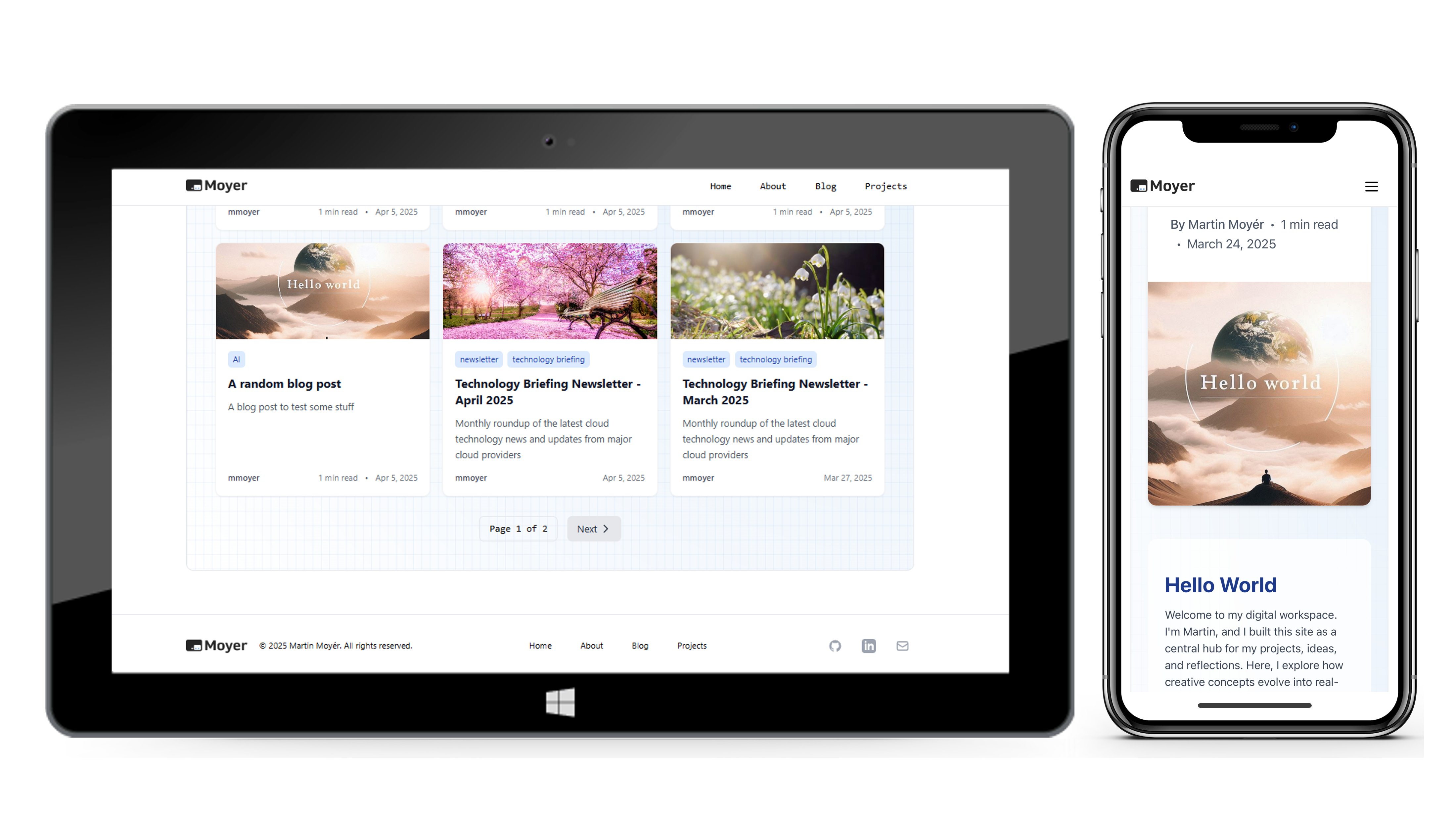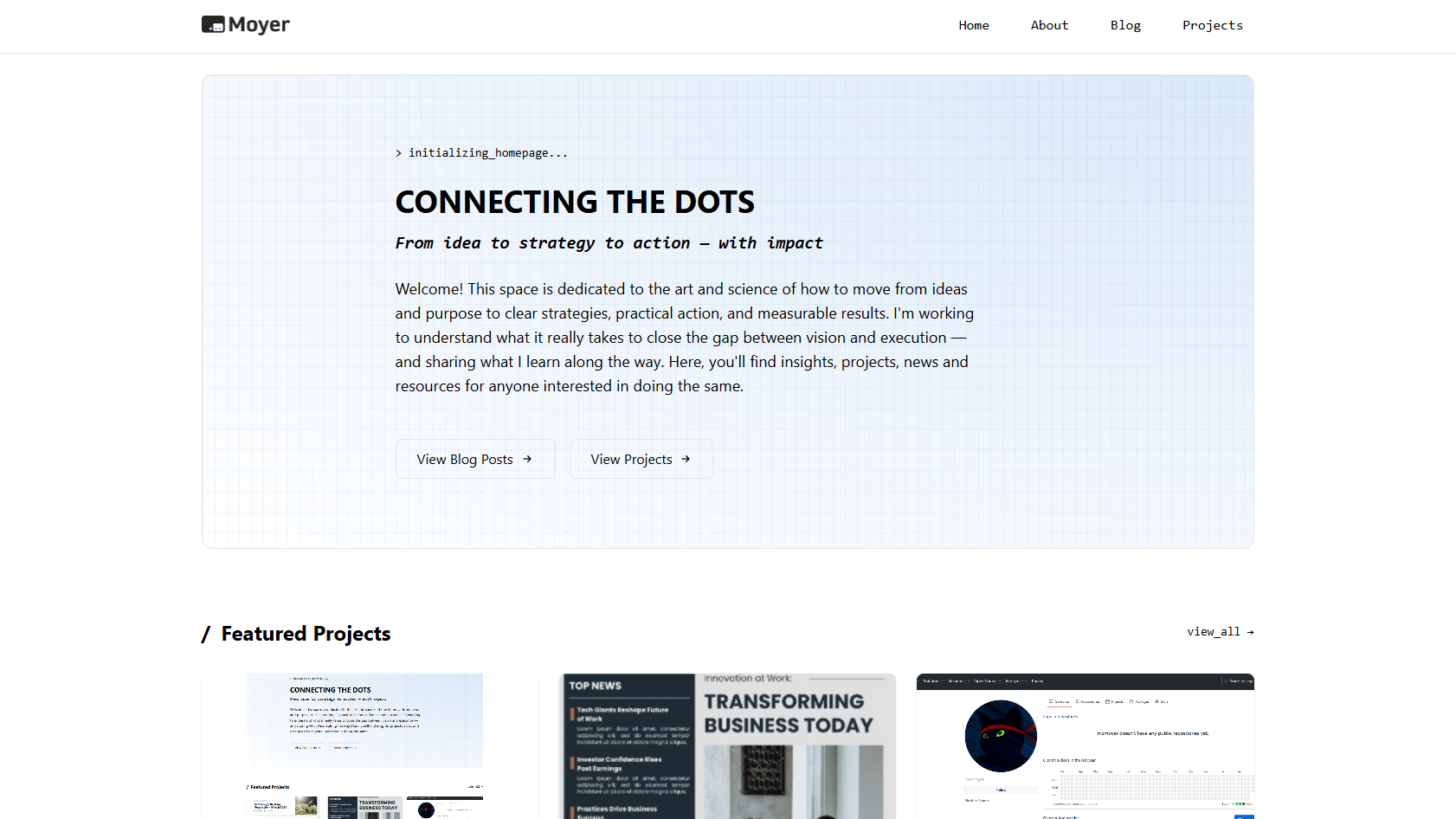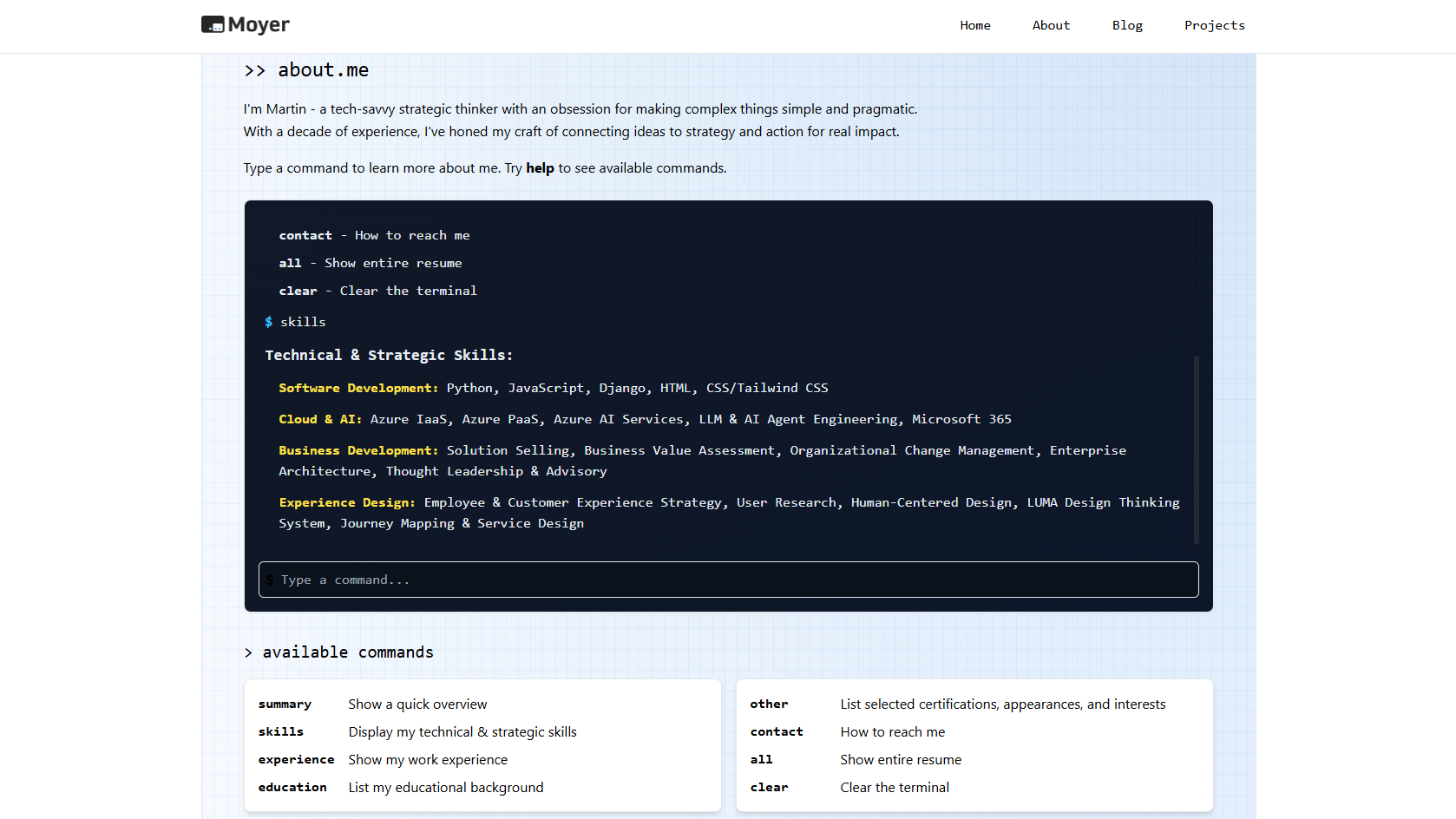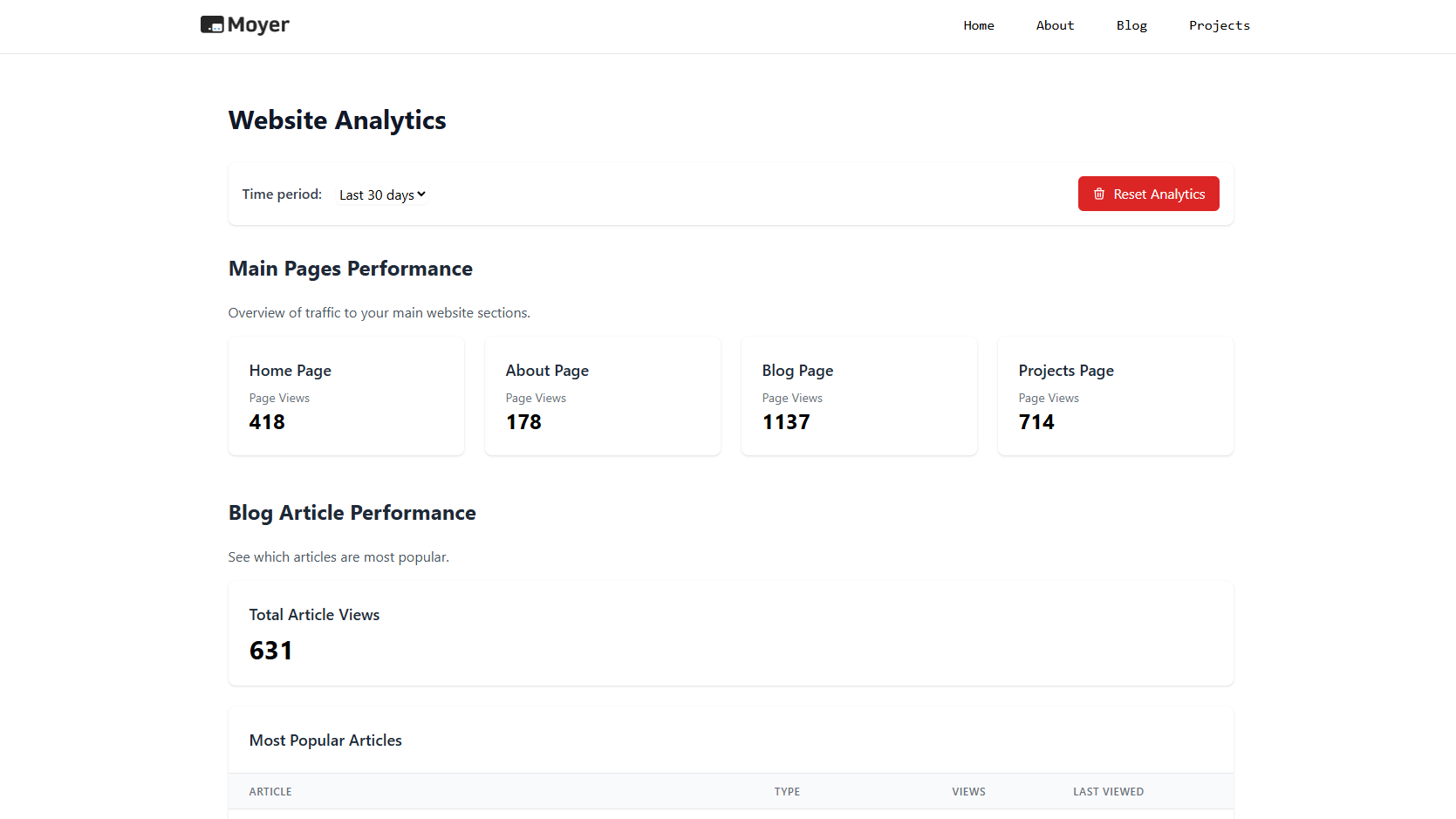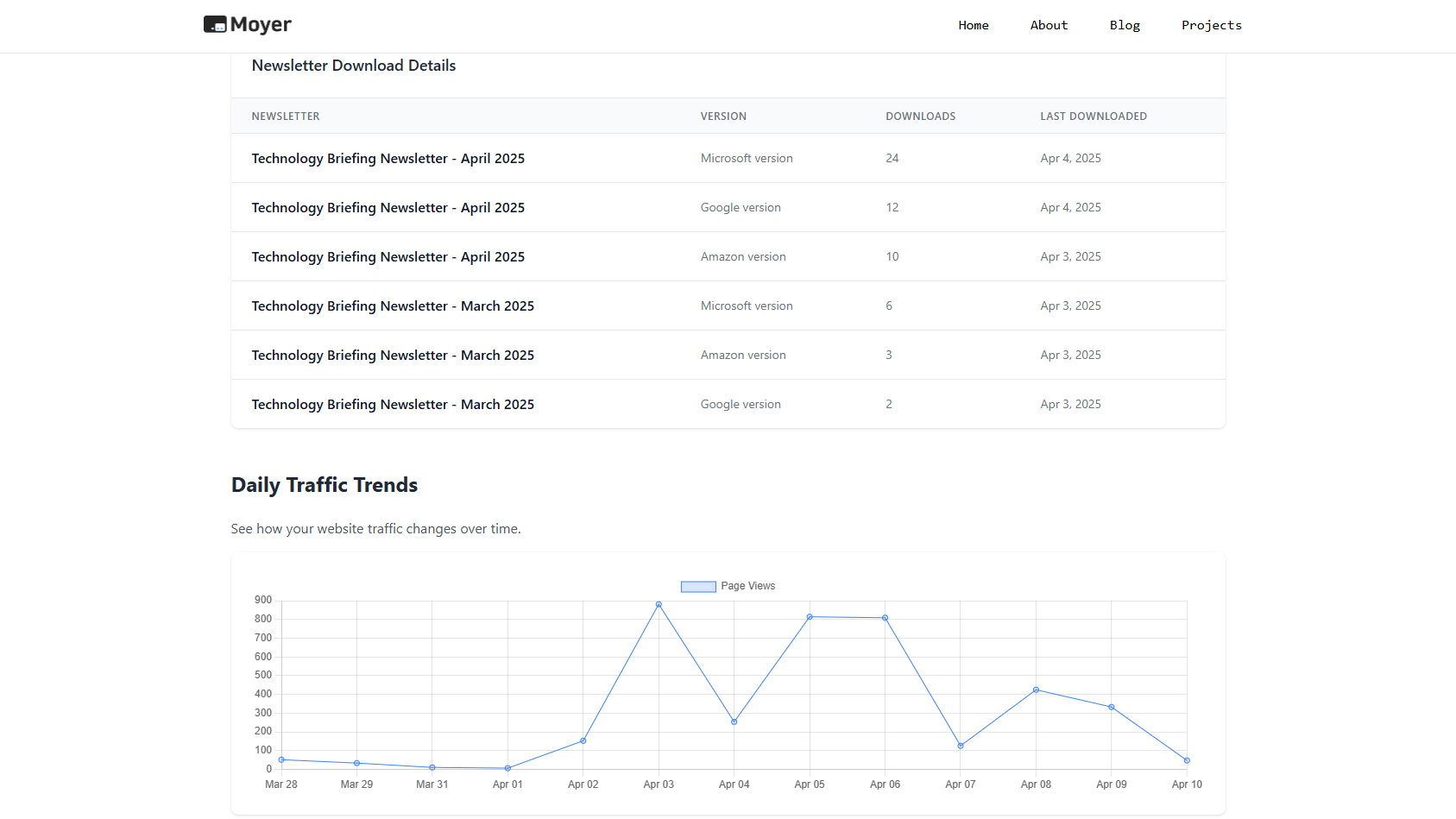Blog & Portfolio Platform
What It Is
A dynamic Django web app that blends a professional portfolio with a tech blog. It’s my digital workspace – a hub where creative ideas, project stories, and technical insights converge into a cohesive and engaging experience, and will serve as an ongoing record of my journey in honing the craft of linking vision with practice.
Why I Built It
I needed a place that could serve as my personal archive of research, news, reflections and projects in technology, strategy and other areas of interest. I built a custom solution, because it allowed me to implement the exact workflow needed for capturing, presenting and sharing my ideas, news and projects while maintaining complete control over the design and functionality.
How It Works
Content Creation: I use an intuitive admin interface for crafting portfolio projects, blog articles, and technology briefings. The system features live preview capabilities and user-friendly rich text editors combined with tailor-made templates, ensuring each piece of content is visually engaging and accurately formatted before publication.
Organization & Publishing: Content is structured across two main sections – Blog and Projects – and can be searched, filtered by topic or technology, and managed through a flexible publishing workflow from draft to published.
Delivery & Engagement: Visitors access the platform through a responsive, mobile-friendly interface with smart filtering tools and interactive features like likes, shares, and downloads – making it easy to discover, engage with, and revisit content that matters.
Analytics & Insights: A lightweight analytics layer, built with custom middleware, tracks user engagement events – including views, likes, shares, and downloads – on a session level. The result is a feedback loop that informs smarter decisions about what to create, improve, or highlight.
Tech & Implementation
- Frontend
- HTML & Django Templates: Fast server-side rendering ensures quick page loads and better SEO
- Tailwind CSS: A utility-first framework that enables efficient, responsive design without the need for custom CSS for each element
- JavaScript: Enhances interactivity with dynamic content loading and smooth transitions, reducing full-page reloads
- Backend
- Python 3.11 with Django 5.1: Offers a robust and maintainable MVT architecture for scalability and easier future development
- PostgreSQL: A relational database that integrates seamlessly with Django ORM, with fine-tuned query handling
- Custom Analytics Middleware: Tracks user interactions efficiently, providing session-based data insights without impacting performance
- Infrastructure & Deployment
- Docker: Multi-stage builds ensure consistent environments for development, staging, and production, simplifying deployment and scaling
- Azure Web App & Blob Storage: Scalable hosting with Azure Web App and efficient media file management through Azure Blob Storage
- GitHub Actions: Automates testing, building, and deployment, ensuring reliable, error-free updates through CI/CD integration with GitHub
What Stands Out
My Digital Workspace: This platform is not just a showcase – it’s my creative hub where I blend projects, reflections, and technical insights in one place, and intelligent sorting brings together all the content, telling a coherent story of my expertise and creative journey.
Interactive Portfolio: Responsive galleries and technology-based filtering make it easy to explore my work. Each project is presented using a custom page template, ensuring a clear, structured, and visually appealing layout.
Tailored Technology Briefings: Dedicated page type for Microsoft provide vendor-specific insights and news on global cloud technology developments. The page includes interactive elements and auto-generated PDF that turn briefings into clean, downloadable resources. Additionally a different page type provide a more broad scan of technology news and updates from multiple tech providers.
What I Learned
From Idea to Execution: This project reminded me how important it is to connect vision with action. Early design thinking helped clarify the real needs I was solving, while outlining a clear path forward made it easier to identify gaps in my skills and knowledge. That clarity let me decide when to invest time in learning and when to pivot toward more familiar ground – striking a balance that kept the project moving and made room for both growth and efficiency.
From Code to Cloud: Taking this platform from a blank file to a live deployment was a hands-on learning experience. It wasn’t just about writing code – it was about making all the small pieces work together. From configuring settings.py or the Dockerfile to setting up environment variables and secrets in Azure, each step required attention and problem-solving. I had to think about infrastructure, automation, and deployment in a more integrated way. It’s been a great opportunity to hone the skills needed to launch a functional product.
Resources
Django Framework: https://docs.djangoproject.com/
Tailwind CSS: https://tailwindcss.com/docs
Docker: https://docs.docker.com/
Azure Web App Service: https://learn.microsoft.com/en-us/azure/app-service/
